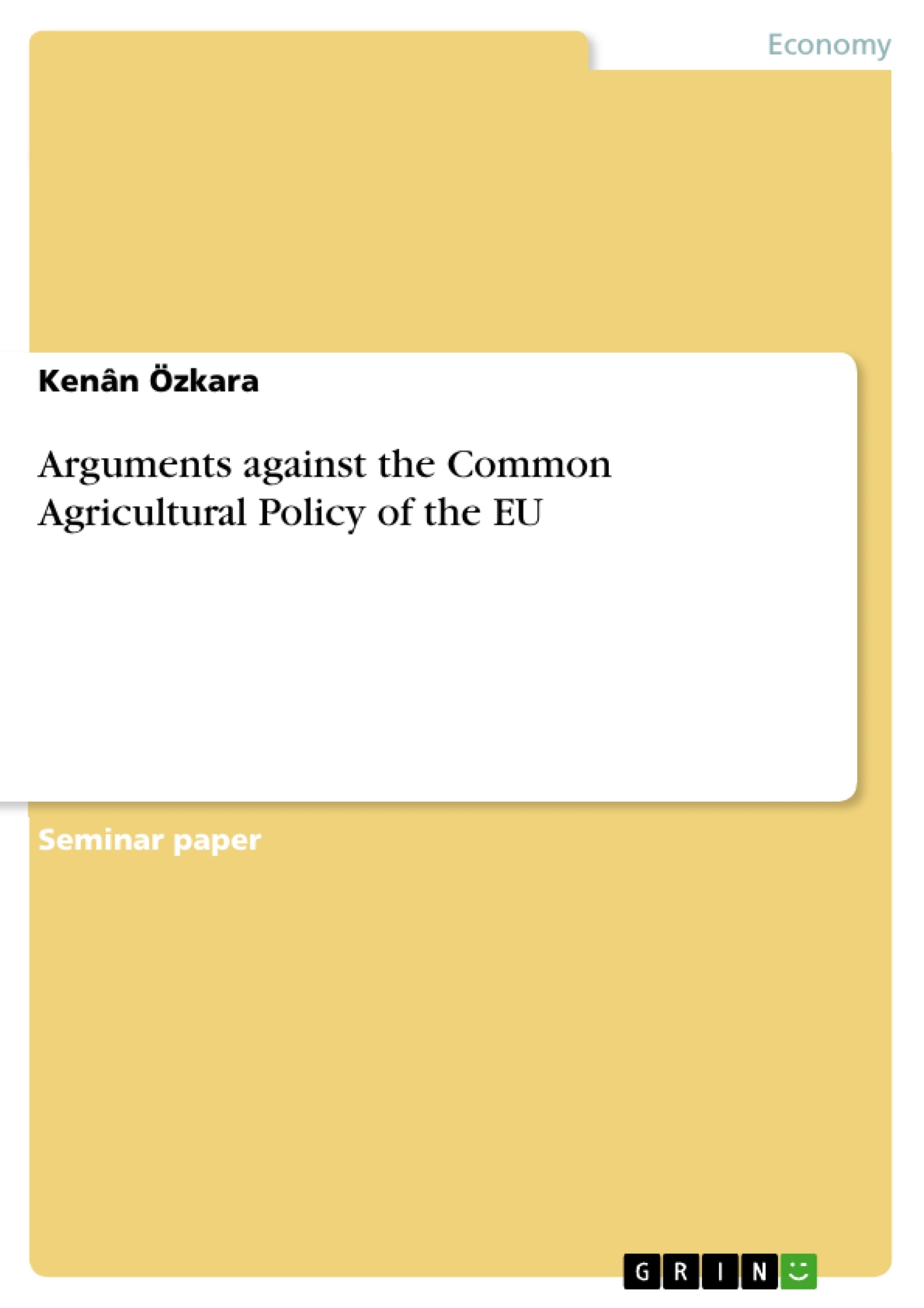Excerpt
Table of Contents
List of abbreviations
List of figures
1. Introduction
2. The CAP and its impact
2.1. Methods of support
2.2. Budget troubles and “food mountains”
2.3. Dumping - “Everything but EU farms”
2.4. Unequal distribution of benefits
2.5. Environmental damages
3. Reforms
4. Evaluation of today’s CAP
4.1. Instruments of the CAP
4.2. Budget troubles and “food mountains”
4.3. Dumping
4.4. Unequal distribution of benefits
4.5. Environmental damages
Appendix
References
List of Abbreviations
illustration not visible in this excerpt
List of Figures
Figure 1: Price support with tariff
Figure A2: EU budget 2005
Figure A3: Countries shares of total export subsidies (value)
Figure A4: Total global export subsidies
Figure 5: Estimated losses for the poorest countries
Figure A6: Sugar dumping grounds - selected EU export destinations and competitors VI Figure 7: Distributions of gains between big and small farms
1. Introduction
Launched in 1962, the Common Agricultural Policy (CAP) was intended as a common policy in order to strengthen common links in other policy areas. According to Article 33 (former Article 39) of the Rome Treaty[1] the primary objectives of CAP are to:
a) increase agricultural productivity
b) ensure a fair standard of living for farmers
c) stabilize markets
d) guarantee food supplies
e) ensure reasonable prices for consumers.
Unfortunately these objectives are mutually contradictory and create serious problems. Analyzing the main impacts of the CAP, this paper is organized as follows:
In the beginning of chapter 2 the functioning of the CAP is explained. Afterwards the main problems of this policy are critically analyzed. Here, emphasis is put on financial, social and environmental aspects as well as on world-market distortions. Because of the persisting debate, chapter 3 focuses on the reforms of the CAP. To conclude, chapter 4 briefly evaluates the reformed CAP and indicates prospective challenges.
2. The CAP and its impact
2.1. Methods of support
A substantial element of the CAP is the support of farmers. Here, different methods have been practiced:
a) Variable levies: Threshold prices and charge levies on imports are imposed, which are equal to the difference between world prices and the threshold price. The threshold price marks the minimum price for imported products (El Agraa, 1990, pp. 200). This system may be combined with quotas.
b) Deficiency payments: The EU directly pays the farmers the difference between the market price and a target price for each unit produced (Baldwin/Wyplosz 2004, p. 239).
c) Direct income subsidies: The EU transfers income directly to the farmers independently from their output (Baldwin/Wyplosz 2004, p. 231).
[...]
[1] http://europa.eu.int/eur-lex/lex/en/treaties/dat/12002E/htm/C_2002325EN.003301.html
- Quote paper
- International Economics M.A. Kenân Özkara (Author), 2005, Arguments against the Common Agricultural Policy of the EU, Munich, GRIN Verlag, https://www.grin.com/document/53638
Publish now - it's free






















Comments